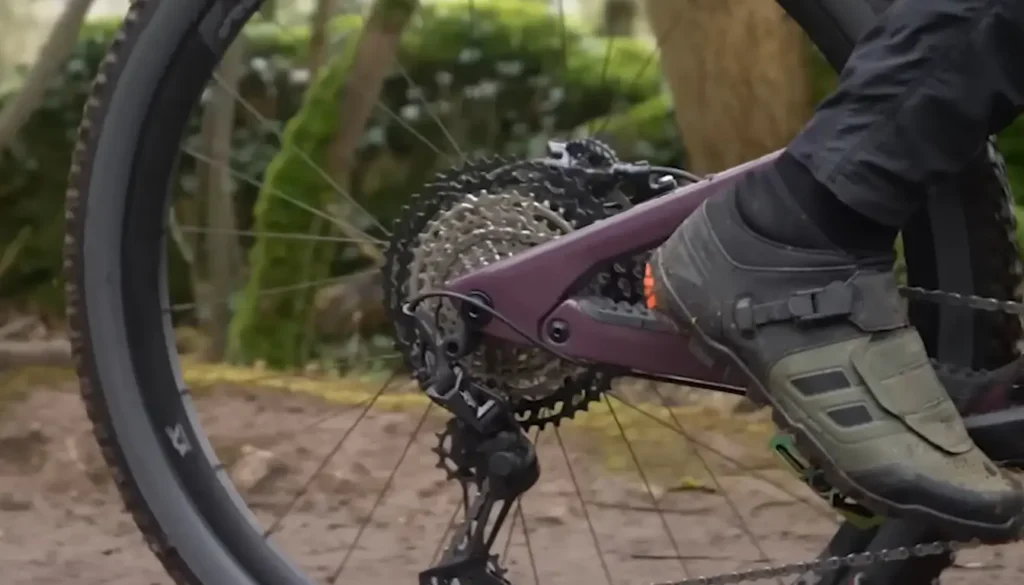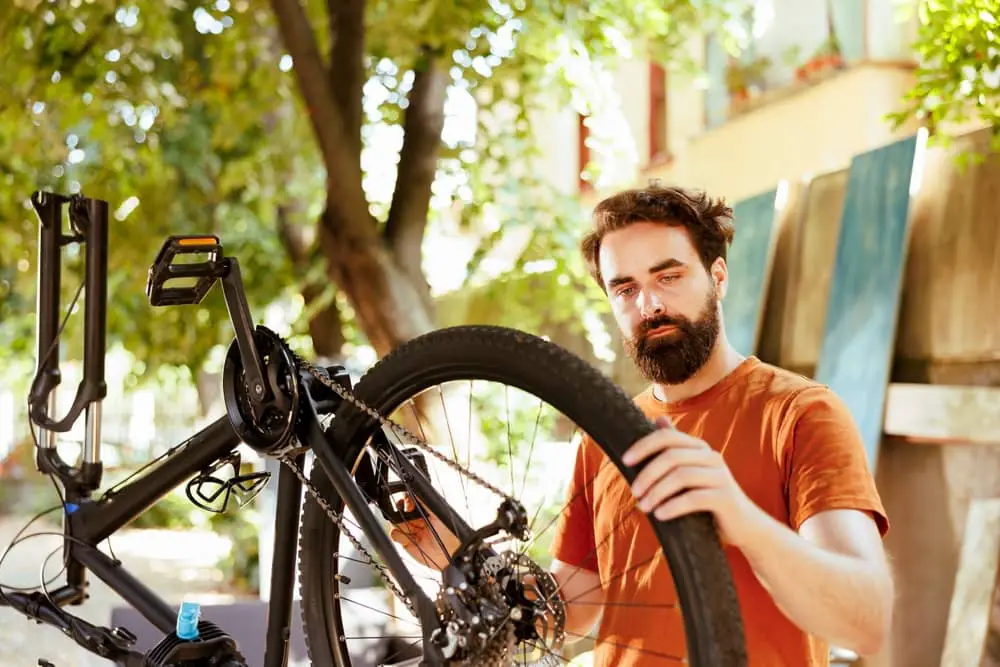Hey there, fellow mountain biking enthusiast! Have you ever wondered when it’s time to say goodbye to your trusty mountain bike tires? Well, you’re in the right place because today, we’re diving into the world of knowing when to replace mountain bike tires. Whether you’re a seasoned rider or just getting started, understanding the signs that indicate it’s time for a tire swap is essential for a safe and enjoyable biking experience. So, let’s gear up and explore the ins and outs of when to replace mountain bike tires together!
Signs of Wear and Tear
What Are the Signs of Wear?
When you’re out on the trails with your mountain bike, keeping an eye on your tires is essential. Here are some common signs that indicate your mountain bike tires may need replacing:
- Worn-Out Tread: Take a close look at the tread pattern on your tires. If you notice that the tread is worn down, with shallow grooves or even bald spots, it’s a clear sign that your tires have seen better days.
- Visible Cracks: Inspect the surface of your tires for any visible cracks or cuts. These can weaken the tire’s structure and increase the risk of failure, especially when riding over rough terrain.
- Sidewall Damage: Check the sidewalls of your tires for any signs of damage, such as bulges, cuts, or tears. Damage to the sidewall can compromise the tire’s integrity and lead to unexpected blowouts.
Why is it Important to Identify Wear?
Identifying wear on your mountain bike tires is essential for several reasons:
- Safety: Worn-out tread reduces your tires’ grip on the trail, increasing the risk of slipping and losing control, especially on slippery or uneven surfaces.
- Performance: Tires with worn tread or sidewall damage can affect your bike’s handling and responsiveness. This can make navigating tight corners or obstacles more challenging, compromising your overall riding experience.
- Prevention of Punctures and Blowouts: Cracks and sidewall damage weaken the tire’s structure, making it more susceptible to punctures and blowouts. Identifying and replacing worn tires preemptively can help prevent potentially dangerous situations on the trail.
Frequency of Replacement
How Often Should Mountain Bike Tires Be Replaced?
There is no one-size-fits-all answer when it comes to replacing mountain bike tires. It depends on a few important factors that can vary from rider to rider and trail to trail.
Terrain: If you’re regularly tearing up rugged, rocky trails, your tires will take more punishment than cruising along smoother paths. Rough terrain wears down tires faster, so you might replace them more often if you hit the trails hard.
Riding Style: Are you a daredevil who loves pushing the limits on steep descents and technical sections? Or do you prefer a more leisurely ride, taking in the scenery at a relaxed pace? Your riding style can affect how quickly your tires wear out. Aggressive riders who tackle challenging terrain are likely to put more stress on their tires and may need to replace them more frequently.
Tire Quality: The quality of your tires can also impact how long they last. High-quality tires made with durable materials will likely have a longer lifespan than cheaper, lower-quality options. Investing in good-quality tires upfront can save you money in the long run by reducing the frequency of replacements.
General Rule: As a general rule, aggressive trail riders who regularly tackle challenging terrain may find themselves replacing their tires more often than casual commuters who stick to smoother paths. However, it’s essential to pay attention to the condition of your tires and replace them as needed to ensure your safety and performance on the trails.
Importance of Proper Maintenance

Proper maintenance is like giving your mountain bike tires a VIP treatment—they’ll last longer and perform better. Imagine this: you’re cruising down a trail, feeling the wind in your face, and suddenly, your tire gives out. That’s not just a buzzkill; it’s dangerous! So, here’s why giving your tires some TLC is super important:
Why is Proper Tire Maintenance Essential?
Think of your tires as the shoes of your bike—they take the brunt of every bump, rock, and jump. Regular maintenance keeps them in top shape, so they can tackle any terrain like a champ. Here’s why it’s a big deal:
- Prolongs Tire Life: Just like regular exercise keeps you fit, checking tire pressure, cleaning debris, and storing tires away from direct sunlight can make your tires last longer. It’s like adding extra miles to their lifespan!
- Enhances Performance: Ever tried running in worn-out shoes? It’s not fun. Properly maintained tires grip the trail better, giving you better control and smoother rides. Who doesn’t want that?
Assessing Tread Wear
How to Assess Tread Wear?
Now, let’s talk about reading the signs your tires are giving you. Assessing tread wear isn’t rocket science; you just need a keen eye and a gentle touch. Here’s how to do it:
- Visual Inspection: Take a good look at your tires. Are the treads looking shallow or worn out? If so, it might be time for a replacement.
- Tactile Methods: Run your fingers along the tire’s surface. Do you feel any uneven spots or bald patches? Those are red flags that your tires need attention.
Sidewall Damage
Recognizing and Addressing Sidewall Damage
Sidewall damage is like a battle scar—it tells stories of your adventures but can also signal trouble ahead. Here’s what you need to know:
- Causes of Damage: Sidewall damage can happen from hitting rocks, sharp objects, or simply from wear and tear over time.
- Assessment: Take a close look at the sidewalls. Are there cuts, tears, or bulges? If the damage looks serious or compromises tire integrity, it’s time to consider a replacement.
Longevity of Tubeless Tires
Do Tubeless Tires Last Longer?
Tubeless tires are like the superheroes of the biking world—strong, resilient, and ready for anything. But they still need some love to keep them going the distance. Here’s the scoop:
- Advantages: Tubeless tires are known for their puncture resistance and longer lifespan compared to tubed tires. That means fewer flats and more time on the trail!
- Maintenance Matters: While tubeless tires are tough cookies, proper installation and maintenance are key to maximizing their lifespan. Keep them sealed tight and free from debris for optimal performance.
Environmental Considerations
How Environmental Factors Impact Tire Lifespan
Nature can be both a friend and foe to your tires. Understanding how environmental factors play into tire longevity can help you keep them rolling for longer. Here’s the lowdown:
- Climate Concerns: Extreme temperatures and UV exposure can speed up tire deterioration. Storing your tires in a cool, dry place away from direct sunlight can help preserve their lifespan.
- Storage Savvy: When you’re not hitting the trails, give your tires a cozy spot to hang out. Proper storage away from harsh elements can extend their lifespan and keep them ready for action when you are.
By giving your mountain bike tires the care and attention they deserve, you’re ensuring safer rides and maximizing your biking adventures. So, remember to check those treads, watch for damage, and store your tires like the precious gems they are. Happy riding!
FAQs For When to Replace Mountain Bike Tires
Can I continue riding with minor tire damage?
While pushing through with minor damage may be tempting, it’s best to address it promptly to prevent further issues and ensure your safety on the trail.
Are there specific indicators of tire wear for different terrain types?
Yes, different terrains can cause specific types of wear on tires. For example, rocky trails may result in more sidewall damage, while muddy conditions can accelerate tread wear.
Can I extend the tire lifespan through repairs or upgrades?
While repairs may be possible for minor damage, it’s essential to consider the overall condition of the tire. Upgrading to higher-quality tires can improve performance and longevity in the long run.
Conclusion
In conclusion, knowing when to replace mountain bike tires is crucial for trail safety and enjoyment. By checking for signs of wear and tear, regularly maintaining your tires, and being mindful of environmental factors, you can ensure that your tires are in top condition for every ride. Don’t wait until it’s too late—stay proactive and replace your tires when needed to keep your biking adventures rolling smoothly.
So, remember to check those treads, assess any damage, and invest in new tires when necessary. With proper care, you’ll be ready to tackle any trail confidently.

